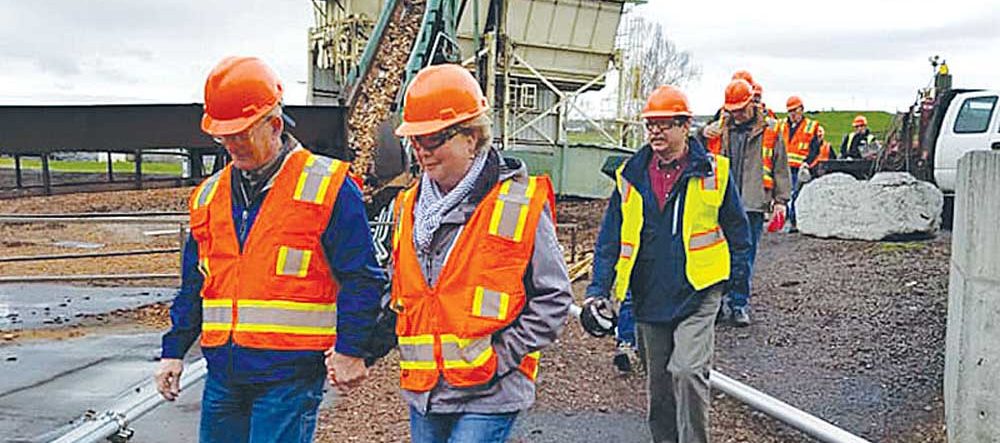Eagle country: Ranchers blame eagles for livestock deaths in Brownsmead
Published 3:30 pm Wednesday, May 22, 2019

- A bald eagle sits perched on a tree branch.
BROWNSMEAD — The large bald eagle flew so low over Ben Parker’s head, he felt the wind from its wings.
“She comes right down overhead,” he said.
The Brownsmead rancher suspects it is the same eagle that has been been hunting his lambs this spring. He has lost four so far.
Longtime Clatsop County residents can still remember a time when it was rare to see a bald eagle. The raptors were once considered on the brink of extinction and were only removed from the federal Endangered Species Act list in Oregon in 2007.
Now? “It’s basically almost an explosion,” said Neal Maine, a Gearhart-based wildlife photographer.
Bald eagles are found in nearly every county in Oregon and their numbers continue to rise across the country. With this eagle explosion comes a new challenge: How to coexist?
Predation of livestock by eagles is rare on the North Coast, according to state and federal reports. But the numbers are hard to tease out. Many people don’t report predation, and even when they do, it’s not always possible to be certain an eagle is to blame.
“It gets a little murky,” said Russell Hunter, a veterinarian who runs his practice out of Knappa and has helped investigate livestock deaths. “The predation is real and it’s emotional and it’s a little bit hard to determine how much of it is going on.”
An animal may die in a field from other causes but be found with an eagle or coyote hunched over it munching away.
When a bald eagle is clearly the killer, there isn’t much ranchers can do about it, anyway. Bald eagles may not be an endangered species anymore, but they are still protected.
The U.S. Fish and Wildlife Service issues permits to haze eagles, but has not issued any to ranchers this year. The agency has fielded numerous inquiries, however.
“(Bald eagles) are demonstrating increasing tolerance for human activity in parts of Washington and Oregon as their increasing numbers — and increasing human populations — create more overlap between human-occupied and eagle habitats,” said Jason Holm, a spokesperson for the federal agency.
Parker lives off Brownsmead Dike Lane, an area crossed by sloughs, dotted with open fields and bordered by tall trees. Prime bald eagle territory.
The rancher is keeping his sheep inside the barn for now while he figures out how to keep eagles away. He has started to experiment with placing scarecrows and flags in his fields. There isn’t much else he can legally do without a hazing permit.
And he’s holding onto the carcass of a gutted 2½-month-old lamb. He found it in a field with a bald eagle sitting on top of it, he said, and he’s waiting for federal biologists to take a look and confirm an eagle was responsible. His neighbor, Ed Johnson, went through a similar process recently.
Johnson, whose house is just visible from Parker’s property, lost three lambs this spring.
Both men are used to dealing with predators like coyotes. Johnson uses guard dogs to protect his flock from coyotes and roaming domestic dogs. But this is the first year in the roughly three years Parker has been raising lambs that eagles have been a problem.
Dirk Rohne, a Brownsmead dairy farmer and Port of Astoria commissioner, heard from a number of people about eagle issues this spring.
“The bald eagles impacting livestock is a new one,” he said. “I can’t say anyone was talking about that until this year.”
On a positive note, he added, the eagles seem to have taken a major bite out of Brownsmead’s invasive nutria population.
Johnson has lived in the area for more than 40 years and maintains a flock of around 55 ewes and 80 lambs. He feels that issues with eagles come in cycles.
When runs of smelt — small forage fish that travel in schools — are strong in the Columbia River, he doesn’t see as many eagles. When smelt runs are low, well — “It kind of depends what’s around to eat and unfortunately sometimes it’s lambs.”
For the sheep ranchers in Brownsmead, predation by eagles has not become a substantial financial hit. Ranchers expect to lose some sheep each year to predators.
“I’ve got nothing against the eagles,” Johnson said. “They’re beautiful. But at times there would be seven or eight of them sitting around waiting for a little action.”
Johnson tends to be philosophical about it. He’s not interested in spending the $100 on a hazing permit, and then more money on things like explosives or other noisemakers to scare the birds. It takes time to get the permit and, besides, the eagles are not a problem every year.
In 1989, Maine was part of a push to establish the Twilight Eagle Sanctuary at Cathlamet Bay, not far from Knappa and Brownsmead. At the time, advocates estimated there were only around 40 bald eagles in the proposed sanctuary boundaries, about half of the total population of bald eagles believed to be in the entire lower river area.
Now, when Maine is out documenting eagle and osprey nests for the state, it is not unusual for him to count more than a dozen bald eagles just on the drive from Gearhart to the Peter Iredale shipwreck at Fort Stevens State Park.
He has seen as many as 21 bald eagles in a single tree on an island in the Columbia River estuary. Recently, birders counted 75 to 100 eagles in a field just outside Astoria.
“A lot of wildlife stories have sad endings,” Maine said, “and this is one of those where, ‘Oh my gosh, maybe we’re too successful.’”









